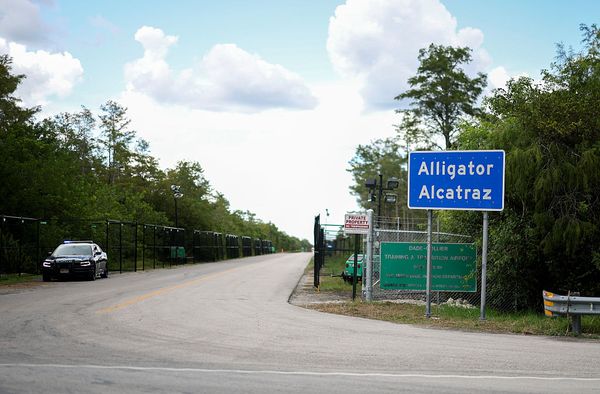Fish are a nutritious, affordable protein and source of income to those who catch and sell them. As millions of people in Africa suffer from undernutrition, a lack of vital vitamins and minerals and rising rates of overweight and obesity, caused by hunger, food insecurity and eating unhealthy food, fish could help solve these problems.
But in Kenya, people eat an average of just 2.5kg of fish per year. World Health Organization recommendations are for 10.4kg of fish per year. Fish is unaffordable for many Kenyans, and some haven’t yet fully appreciated its nutrition and health benefits. However, demand for tilapia and Nile perch is more than the current supply and this provides a good opportunity for investment in aquaculture.
Read more: Aquaculture in sub-Saharan Africa: small successes, bigger prospects?
I was part of a multidisciplinary and gender responsive team of researchers who explored how to expand aquaculture and fisheries to meet the need for fish as a healthy food. Aquaculture, which is the farming of fish, shellfish and aquatic plants, involves breeding, feeding and managing these animals to increase food production, support local livelihoods and meet the rising demand for nutritious food.
In contrast, fisheries focus on harvesting fish and other aquatic life from natural waters through capture, processing and marketing.
We reviewed the technologies, innovations and management practices used in fish production. We looked at how fish are processed and marketed.
Our research found that fish need to be farmed in a climate-smart way. This simply means that they’ll be able to withstand drought, floods and heatwaves.
Farming methods that work with nature are especially helpful as the climate changes. Fish farming can be combined with raising chickens or livestock so that waste from one helps the other. For example, animal manure can fertilise fish ponds, helping fish grow naturally. This makes the most of resources already on the farm.
Aquaculture and fisheries are part of the blue economy. Africa needs a thriving blue economy to put more food on people’s plates, reduce imported fish, create jobs, and protect the environment. Aquaculture also helps communities cope with extreme weather and improve their lives.
Africa’s aquaculture struggles to stay afloat
Africa’s aquaculture sector is the fastest growing in the world, but the continent is responsible for only 2% of the world’s total aquaculture production.
Africa’s aquaculture industry is made up of many small-scale fish farmers who either catch or raise about 0.5kg to 10kg of fish per day, and sell them at local markets. These farmers usually build and manage their own ponds in backyards or use community ponds. But they have limited resources and few modern technologies.
Studies also show that women and young people especially struggle to borrow money or get grants to start aquaculture businesses. They also lack land, training and a voice in decision making.
Read more: Review of nine African 'blue economy' projects shows what works and what doesn't
In the fisheries sector, overfishing, pollution and plastics are damaging ecosystems. When fish are caught faster than they can reproduce, populations decline. Climate change alters water temperatures and currents, shifting fish migration patterns and reducing oxygen levels.
Fisheries also lack enough funds to carry out research, provide training and support for fishers, or adopt new technologies.
Read more: African marine rules favour big industry, leaving small-scale fishers in the lurch
One big problem for both the aquaculture and fisheries sectors is that fish is highly perishable. Post-harvest losses (after the fish is caught), and waste, cost traders and communities millions of dollars annually. Up to 30% of fish caught in Africa spoil after harvest due to poor handling of the fish, lack of proper cold storage facilities, inefficient processing methods and inadequate transport.
Unreliable electricity makes the situation worse.
Another problem is that most policies promoting aquaculture and fisheries are gender-blind (not specifically designed to support women even though they make a vital contribution to household nutrition and local food systems).
What needs to happen next
Modern facilities are needed. These include cold storage with solar-powered freezers, insulated transport to preserve fish on the way to the market, smoking, drying and vacuum packaging to extend shelf life, and tracking apps to make sure that fish are delivered fast after they’re caught.
Women and young people should get skills training and access to digital tools. These include mobile apps, smart sensors, satellite tracking and e-commerce platforms. These technologies can help eliminate middlemen who charge small fishers a fee to sell their fish. Technology can also curb illegal fishing and make it possible to trace the fish back to its source.
Read more: How to harness the ocean for prosperity: funding African innovations can unlock the blue economy
The impetus to make these investments in sustainable aquaculture and enable countries to share technology could come from an international grouping like the G20.
The G20 could work on making regional value chains stronger, and expanding market access for fish producers across Africa. This would be a boost for food security and intra-continental trade, and generate employment.
Key areas needing investment include fish breeding, better feed, cold storage and processing. It’s also vital to improve disease control, and certifying the fish.
Read more: Cage farming can protect Lake Victoria's fish. But regulations need tightening
As part of Kenya’s Climate Smart Agriculture initiative, the government and development partners have started investing in improved solar fish driers and improved fish smoking kilns, fish display units and solar powered ice production plants, giving equipment to communities free of charge.
But research has shown that the fish traders who buy, sell and distribute fish adopt new technology only when they see how it benefits them financially. So, it’s important to involve them in developing these tools and offer hands-on training to show how they can boost profits.
Read more: How marine fisheries can add millions of tonnes to Africa's catch
Our research also recommends training women and youth to adopt modern fish farming techniques. Philanthropic funding should be directed at smallholder farmers so that they can adopt innovative low-cost fish farming systems such as aquaponics (farming fish and plants together using fish waste as feed for the plants) and black soldier fly farming, where the flies are fed to fish instead of expensive fish food.
Establishing community-run processing hubs to preserve fish and create jobs is essential, given that aquaculture and small-scale fishing are key sites of entrepreneurship and job creation in communities dotted along coastal and river or lake regions in Africa.
Public campaigns to convince people to eat more fish could succeed in highlighting how fish is an important part of a nutritious diet.
Maureen Jepkorir Cheserek received funding from the World Bank through the Government of Kenya for their Aquaculture Value Chain Projects of the Kenya Climate Smart Project (KCSAP). We also received honoraria from the Africa Climate Foundation (AFC) through the African Food Systems Transformation Collective (AFSTC) to support the writing of our Issue Brief 'Transitions to Sustainable, Resilient and Equitable Fisheries and Aquaculture in Africa'. She is affiliated with African Economic Research Consortium (AERC) as a Nutrition Research Fellow/Consultant for the Policy Analysis for Sustainable and Healthy Foods in African Retail Markets (PASHFARM) project supported The Bill & Melinda Gates Foundation (BMGF).
This article was originally published on The Conversation. Read the original article.







